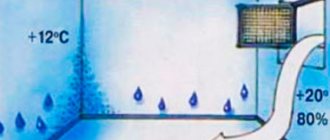How to properly organize sewerage for a summer residence?
This question is one of the main ones in the construction of country houses. After all, in country villages there is no central sewer system, and each owner of a plot must order sewerage for his dacha himself.
On the one hand, there is a natural desire to save money, because often people visit their dacha only on short visits or live there only in the summer. On the other hand, I want to immediately do everything reliably and competently in order to forget about this problem for many years.
Budget septic tanks
Optimal septic tanks
You can order sewerage for your dacha from specialists, or do it yourself. In any case, there are certain norms and rules by which an autonomous treatment facility is organized. You cannot pour untreated wastewater directly onto the ground - this is prohibited by the Sanitary and Epidemiological Station and can lead to soil contamination. At the same time, untreated wastewater includes both black and gray wastewater. All domestic wastewater must be treated in the same treatment facility.
Therefore, wastewater should be discharged only into special sealed, so-called settling tanks - septic tanks or treatment facilities. Their design largely affects the efficiency, reliability and durability of sewage systems in a summer cottage. In addition, the final cost of a turnkey installation depends on the choice of septic tank.
Photo. Sewerage for the Tver dacha
Where to complain and what to do when neighbors drain sewerage into the garden
A gutter in your own garden is not the most pleasant thing. But sometimes neighbors in a dacha or country house do exactly this - they drain the drain along the border of the property, beyond the fence, and all the sewer water flows without encountering obstacles. In addition to the stench, sewers spread a lot of infection, including microbes dangerous to human health.
If this is an accident, a pipe burst or a neighbor simply did not see where exactly his drain was flowing, a conversation is enough. But in some cases you have to take extreme measures - contact regulatory authorities and courts. Let's talk about this solution to the issue in more detail.
Fines for draining sewerage into a garden or public ditch
The degree of punishment depends on the guilt. If a person accidentally violates the law, a preliminary warning from the regulatory organization is enough for him.
The sanitary and epidemiological supervision issues a warning, indicating the need to eliminate violations of the rights of other citizens.
There is no answer, the sewer still continues to spill into the garden or into a public ditch, then a fine.
In accordance with Art. 6.3 of the Code of Administrative Offenses of the Russian Federation, the punishment is:
How to write a statement to a local police officer
To complain about a neighbor to a local police officer , you need to write a detailed statement, which should contain the following points:
At the end of the application, the plaintiff puts a date, signature and transcript of the signature. Now the application will be considered within 30 days. This is an extreme period of time; in practice, actions from legal and regulatory organizations are observed much earlier.
Ready-made models
If you don’t have time to worry about how to make a septic tank for a bathhouse with your own hands, it makes sense to purchase practical and functional devices at an affordable price. Popular models:
| Model name | Characteristics | Price range |
| Septic tank “Triton” Mini – 750 l/Micro – 450 l | Double-chamber/single-chamber. Light weight – 70/40 kg. Withstands temperatures down to -30 ⁰С. Equipped with a post-treatment system. | The cost of the kit with infiltrator, lid, neck is about 21,000/12,000 rubles. |
| DKS 15 and 15M | Capacity – 450 liters per day. Autonomous, easy to maintain. | About 29,000-33,500 rubles. |
In addition, there are a large number of deep cleaning stations such as “Topas”, “Unilos”, etc., the price of which will be much higher. However, the optimal solution for a bathhouse is simple installations with mechanical filters and sedimentation tanks, which, if necessary, can be equipped with a soil purification system.
Application to court
Only a court decision will bring particularly persistent and unresponsive neighbors to order. To complain to higher authorities, you will have to write two statements, one of which will be sent to the court, the second - to the violator of citizens' rights.
The package of documents when going to court includes:
It would be wise to enlist the support of your neighbors. The more witness statements are attached to the package of documents when going to court, the faster and more severe the punishment will be against the violator of the law.
As for financial costs, the fee is 300 rubles, but an independent examination can cost several thousand. However, taking into account the severity of the violations, the court will oblige the culprit to reimburse all expenses, so the costs will be recouped. The period for responding to a statement of claim in court is up to 2-3 months from the date of filing the appeal. Sometimes the period is extended, for which there is a special court decision.
Where can waste be disposed of?
Human waste must be thoroughly cleaned before being disposed of in soil or water bodies. Only clarified wastewater that has reached biological and physicochemical standards is allowed to be discharged. They are established by sanitary and hygienic rules. The liquid should not contain harmful, toxic or health-hazardous impurities. Particular attention is paid to bacterial indicators in relation to household wastewater.
It is home drainage water that can become a source of intestinal infections and parasitic diseases.
If there is a cesspool or a sealed septic tank, it is necessary to periodically pump out the contents of the tank using sewage equipment. Its owners enter into agreements with organizations that supervise local wastewater treatment plants, where the pumped-out feces are transported. But there are other ways to dispose of autonomous sewage waste. They depend on the design features of the drainage system.
Peat toilet
Waste products are layered with peat, and when the compartment is full, the contents are transferred to a compost pit. It is supplemented with grass, vegetable and fruit peelings, and other biodegradable ingredients. As a result, the organic matter rots, and after a season an excellent fertilizer for the garden and vegetable garden matures.
To increase the performance of such amenities, a drain hose is attached to them to drain excess liquid. It will not be aggressive because it has already been cleaned through a peat filter.
Chemical toilet
Getting rid of content here is more difficult. The reagents poured into the receiving tank are chemically active. The contents of the toilet will not compost; it will rather harm the soil. Therefore, the waste is poured into a sealed tank, and vacuum cleaners are called in to pump it out. The advantage over raking here is that the help of specialists is required much less frequently.
Sewage system in the country on concrete rings
Often reinforced concrete rings are used to make a home-made treatment plant; a simplified diagram of such a design is shown below.
Diagram of a septic tank made of concrete rings
The undoubted advantage of this solution is the long service life of the structure, as well as its high strength characteristics.
A significant drawback is the need to attract special equipment to install the structure. It is almost impossible to build such an installation without this.
What to do if neighbors do not comply with wastewater standards
Illegal residents of country houses are capable of leading a sewer pipe into a storm drain or even into a neighbor's garden.
Of course, those around you are not delighted with this. But the problem here is not only an unpleasant odor. This attitude towards wastewater is dangerous for the environment and the health of people and animals. First of all, you need to talk to the person causing the problem. Perhaps he does not specifically drain the waste, but, for example, his septic tank burst. But such cases are extremely rare, and violators usually ignore those around them. We have to take tough measures.
You should first of all complain to the authorities that control the sanitary and hygienic condition of populated areas if your neighbors drain sewage into your garden or storm drain. This may be the local branch of Rospotrebnadzor or SES. You must submit a written application there in two copies, one of which must be endorsed and given to you.
When applying you must:
It’s good if not only you, but also all the residents of the street complain. The more requests, the faster Rospotrebnadzor specialists will come with an inspection. They will take samples of the water in the storm drain or the soil at the site where the sewage waste ends up and draw up a report. This document will be needed if the order of the sanitary authorities to eliminate violations is ignored, and in order to punish your neighbors for draining sewage onto your garden plot, you will have to go to court.
Additionally, you can file a complaint with the district prosecutor's office, focusing on the threat to health safety. Employees of this body will have to conduct an investigation and prohibit the dumping of waste in public places or on someone else's territory.
Installation of internal sewer network
The design of a system for removing household discharges should be carried out simultaneously with the development of drawings of a residential building. This allows you to optimize the location of technical premises and most rationally combine them with various communications.
Watch the video
Laying sewer pipes - Slopes, connections, diameter and much more.
As for the sewage system in the country, it is located in such a way that the center line of the drain is located in a straight line. When developing a project for a two-story building, the drainage system is arranged in parallel and converges on one riser. It, in turn, combines drains from different floors and brings them out through a hole in the foundation.
Starting from this place, the sewer network must be insulated, although the pipe is initially located below the freezing level of the soil. This is done in case of extreme weather conditions.
Insulation is carried out with a special casing made of polystyrene foam. Heating cables are also used, mainly intended for defrosting frozen pipelines.
The riser is located strictly vertically, its upward extension continues until it exits the roof, and is called a fan pipe. The upper end is equipped with a cap to protect against precipitation.
To service the system, inspections are installed in several places of the drain water supply.
Responsibility for draining sewerage into a ditch
Sanitary, hygienic and environmental regulations stipulate the rules for the collection, accumulation, transportation, and disposal of waste. If they are violated, the perpetrators are subject to administrative punishment.
The main document according to which the fine for draining sewerage in a private house is determined is the Code of Administrative Offenses of the Russian Federation. Article 8.2 of the Code of Administrative Offenses details how violators of environmental and sanitary requirements are punished.
Penalties for illegal discharge of wastewater include:
The violating company will also be forced to suspend operations for up to 90 days. Penalties may be issued repeatedly until the problems are corrected.
If violations lead to illness or even death of people, criminal penalties apply to the perpetrators.
Hello, Elena Vladimirovna.
By pouring sewage waste into your garden, your neighbor is violating the requirements of the sanitary legislation of the Russian Federation and your constitutional right to health protection. For example, in accordance with Article 10 of the Federal Law of March 30, 1999 No. 52-FZ “On the Sanitary and Epidemiological Welfare of the Population,” citizens are obliged not to carry out actions that violate the rights of other citizens to health protection and a favorable living environment.
In the described situation, we recommend that you file a complaint with the local sanitary and epidemiological supervision body, which will have the right not only to issue your neighbor a warning about the need to eliminate the violations of the law and your rights committed by him, but also to bring him to administrative responsibility under Article 6.3 of the Code of the Russian Federation on Administrative offenses:
- Article 6.3. Violation of legislation in the field of ensuring sanitary and epidemiological welfare of the population
Violation of legislation in the field of ensuring the sanitary and epidemiological well-being of the population, expressed in violation of existing sanitary rules and hygienic standards, failure to comply with sanitary, hygienic and anti-epidemic measures, –
entails a warning or the imposition of an administrative fine on citizens in the amount of one hundred to five hundred rubles; for officials - from five hundred to one thousand rubles; for persons carrying out entrepreneurial activities without forming a legal entity - from five hundred to one thousand rubles or administrative suspension of activities for a period of up to ninety days; for legal entities - from ten thousand to twenty thousand rubles or administrative suspension of activities for a period of up to ninety days.
Filtering drainage well with aeration
How to turn a filtering drainage well into a biological sewage treatment station, into an active bioseptic tank - watch the video:
Diaphragm compressor HIBLOW HP-60, 60 l/min, 51 W, 220 V. Operating pressure: 14.7 kPa, which corresponds to water pressure at a depth of 1.5 m; Noise level: 35 dB; Weight: 7 kg. (1 kPa = 9.524 mBar)
Disc aerator with platform MATALA MDB 11 .
Model / Article: MDB11; Air volume, l/min: 40~120; Dimensions: LxWxH (mm) 290x258x130; Weight (kg) (lbs): 1.5 / 3.3
The aeration element is designed to distribute the air supplied by the compressor throughout the water volume. From the point of view of the intensity of the degree of oxygen dissolution, fine-bubble aeration is the most effective. Air enters through the perforated material, creating a large number of tiny bubbles that rise to the surface of the water, saturating it with oxygen.
The back pressure ring prevents water from entering the aerator. The holes, perforated in the form of lye, open when air enters and close when it stops, which prevents the system from ruptures, contamination and filling the air duct with water.
All models have a 3/4″ male connector. The platform has a cavity that is filled with sand or gravel.
Where to drain purified water from a septic tank?
One of the main issues that must be resolved already at the design stage of local treatment systems is: where to drain water from a septic tank in a country house or in a private house without breaking the law.
The answer determines the choice of option for collecting and disposing of liquid waste, what equipment needs to be purchased, and what work can be done independently?
Standards for the location of treatment facilities on the site
There is a lot of confusion in this area. There are many conflicting standards with different distances, and these standards may differ in different regions, so you need to find out exactly from the local plumbing department. The most common standards can be grouped:
- From the house: to the septic tank - at least 5 m;
- filter device (absorption well, sand and gravel filter, filter trench) - at least 8 m;
- to the filtration field - 15 m;
- to the aeration unit - at least 15 m;
Finding a place for a septic tank on the site is not easy
- at least 15 meters if the septic tank is located against the flow of groundwater;
One more thing. If there is a slope on the site, then the well or borehole should be located above all treatment facilities. To maintain all these distances, you will have to spend a long time working on the site plan. If everything cannot be observed at once, special attention is paid to the distance to the neighbor’s house and well (well), since a violation is fraught with a complaint, subsequent inspections and fines.
Where to drain water from a septic tank
When choosing a drainage method, pay attention to the depth of groundwater. In this case, it is advisable to take into account indicators over several years. Spring is usually taken as the basis, when groundwater comes closer to the surface. As a result, the choice is influenced by 2 indicators:
The main sign of high groundwater is that in the spring, melt water does not go into the ground, and in summer and autumn, during rains, puddles remain on the ground and are not absorbed for a long time.
Filter or drainage well for a septic tank
Collects water, filters it through the drainage layer and passes it into the ground. The method is suitable for areas where the soil allows water to pass through well (for example, sandy soil).
It is impossible to use a drainage well on heavy dense layers (clay, loam).
According to sanitary standards, it is necessary to maintain a minimum distance to an underground source of water - 50 m, to a residential building - 4 m.
You can make a drainage well yourself or purchase a ready-made one.
A cushion of 10-15 cm of crushed stone and up to 30 cm of sand is poured into the bottom. Drainage holes are made in the walls. The space between the outer walls and the ground is also covered with crushed stone. A concrete blind area is installed around the neck.
In the case of using flow-through treatment facilities (rings or storage septic tanks), the duration of operation of the filter well, depending on the intensity of operation, is, on average, from 3 to 10 years. Then the drainage backfill will need to be replaced.
Over time, further excavation will become impossible. Moreover, it is extremely expensive. Therefore, the best option is to use bio VOCs and drain clean water onto the ground.
Filter fields
Drainage aeration fields are used when installing two- or three-chamber septic tanks that require additional treatment with soil. The method is applicable at low groundwater levels below one and a half meters from the ground surface. The field is located at the maximum distance from housing and water sources.
The design uses perforated pipes, which are laid on top of a drainage layer of sand (from 10 cm) and crushed stone (minimum 40 cm). The installation is covered with base soil 30 cm thick.
The service life before changing the filling is from 3 to 7 years and depends largely on the quality of the wastewater. If the drains are greasy, it will clog faster.
Storage tank
Unlike a drainage well, a storage well is made in the form of a sealed container into which the effluent water from the septic tank and sludge can be drained even when the groundwater level is high.
The material used for manufacturing is brick, cast concrete, concrete rings or metal. More reliable are ready-made sealed plastic containers.
Due to its chemical resistance, plastic is the most popular. Unlike other designs, plastic tanks do not require additional waterproofing.
Metal containers can also be used to accumulate treated wastewater, but in an aggressive environment they quickly rust.
A cesspool made of reinforced concrete rings or brickwork requires additional waterproofing. This option is far from budget-friendly and requires periodic updating.
To ensure that water flows from the septic tank by gravity, the outlet pipe is laid at an angle towards the storage tank. If the slope is negative in relation to the tank, you will have to use a pump to forcibly discharge wastewater from the septic tank.
Filter cassettes
The most labor-intensive and expensive filter element of the above. The operating principle of the device is similar to the operation of filter fields.
The drainage pipeline runs inside the cassettes; the cassettes themselves are surrounded by impenetrable walls and a lid. The main purpose of the cassettes is to filter wastewater on clay soils that are poorly permeable to liquid.
It is better to order an area calculation from a specialized organization that has data on soil characteristics. On average, for a family of 3 people, the filtration area will be 12 m2 on loam and 15 – 18 m2 on clay soils.
Why does a cesspool silt up?
The main reason for silting of a cesspool is improper operation. At the same time, it is important to understand that sooner or later the bottom silts up in absolutely all cesspools, but in some cases this happens after 2 years, and in others – after 20.
The rate of siltation of a cesspool depends on:
- Tank volume. A small hole is guaranteed to silt up faster than a large one.
- The type of soil that is at the bottom. The best soil in terms of the rate of filtration of wastewater is sand, the worst is stone or dense clay.
- Number of drains. The more people live in the house and the more actively they use the sewer system, the faster the cesspool will silt up.
- The nature of solid waste. The pit will silt up very quickly if a large amount of insoluble residue is regularly poured into it. You should not pour large remains of vegetables, hair, fur, or any garbage down the drain, not to mention wet wipes and cat litter.
- The amount of chemicals entering the pit. If products containing chlorine, which kill 99% of bacteria, pipe cleaners, antibiotics, acids, alkali, and even ordinary washing powders with phosphates constantly get into the cesspool, the sludge will not dissolve and the pit will quickly silt up.
A cesspool filled with sewage.
Choosing the right water source for watering your garden: frequently asked questions
Summer residents use water from a variety of sources to water their gardens. This could be a cesspool, a well, a small backyard pond, or even water from a septic tank. Quite often water from ordinary wells is used. And of course, we cannot do without rainwater, which is the most optimal for our grown plants.
Each irrigation water has its own advantages and disadvantages, which we will talk about today. A very important point is the pressure of the supplied water and its temperature.
conclusions
The most effective method of dissolving sludge in a cesspool is the use of bacteria . To get a quick result, they must first be prepared and only then poured into a cesspool. After this, for at least 1-2 months you should not pour products that cause the death of bacteria into the sewer. Otherwise there will be no effect. Also, do not use chemicals to dissolve sludge in a cesspool. They will help only for a short time, but will lead to contamination of the soil on the site and groundwater.
The main thing is to always remember that careful handling of the cesspool is the key to its long and trouble-free operation.
We hope that the article helped you figure out how and how to quickly dissolve sludge in a cesspool without the use of chemicals. If you want to share your experience or simply speak on the topic, we are waiting for your comment.
Sources of water for irrigation
Natural pond
Water from a natural reservoir is considered one of the most useful for irrigation. First of all, such water has a suitable temperature regime (the same as that of the environment). But you and I remember that it is absolutely forbidden to water our plants with cold water.
Also, such water for watering the garden does not contain a large amount of salts, which can create a high level of hardness. In addition, natural reservoirs are constantly recharged with useful minerals from underground sources or rain. They contain a large amount of essential substances and minerals.
But even here there are some drawbacks.
Well and artesian water
This source of water contains even fewer impurities than the previous one. But there are much more salts here, which make the water harder. This factor can play a key role in the gradual salinization of the soil if it is alkaline or neutral. The situation can get worse if there is little natural rainfall during the season. Salts will not be washed out, but will only accumulate.
It is also necessary to note the temperature of the water from such sources. It is significantly lower than that of pond water. It is not recommended to use cold water for watering the garden. Otherwise, the development of cultivated crops may slow down significantly: the root system will absorb moisture less well, there will be fewer ovaries, which will affect fruiting results.
But there is a solution to this problem. It consists of installing a storage tank for watering the garden. Thus, all the collected water from the underground source will accumulate in a huge reservoir, where it will be heated to the required temperature.
Rainwater
This type of water is the healthiest for watering your garden. It contains all the necessary nutrients and minerals. To accumulate a sufficient amount of such water for irrigation, we need a large container.
Watering from a cesspool
Many gardeners are sure that watering from a cesspool will not do anything good for their crops and therefore do without this option. In fact, although watering from a cesspool has certain disadvantages, it has many more advantages.
Advantages of watering from a cesspool:
Disadvantages of watering from a cesspool:
Watering from a septic tank
Most suburban dachas and land plots are not equipped with a sewer. In this case, a necessary element for cleaning household waste and wastewater is the presence of a septic tank. His system is quite simple. Cleaning occurs naturally - anaerobically. Unnecessary, already processed bacteria settle to the bottom of the tank, and at a higher level of the septic tank capacity there is purified water without a characteristic odor. But it also requires additional soil cleansing.
Many gardeners, when installing a septic tank, install additional filters for cleaning. Most gardeners are confident that they can immediately water their plot of land as soon as clean water has formed in the septic tank. Actually this is not true.
The resulting sludge should be placed in a compost pit or in the open air. He should remain in this position for about 2 years.
Under no circumstances should water be immediately used for watering plants. It must be cleaned using chlorine or special ultraviolet sterilizers.
Do-it-yourself sewerage in the country from barrels
Let's give an example of the implementation of a homemade septic tank from three plastic barrels, where the first two play the role of overflow compartments, and the last one does not have a bottom, since it is used as a drainage well.
The simplest diagram of a septic tank made from barrels
Designations:
- A – wastewater supply;
- B – foam insulation (winter protection), if the site is in a warm climate, it can not be installed;
- C – hatches (must have ventilation holes);
- D – crushed stone layer;
- E – sand layer;
- F – soil;
- G – sand-cement sealant with a concentration of 5 to 1.
The advantages of this scheme are ease of implementation and low cost of materials. If you work with a partner, construction can be completed within a day.
Main disadvantages:
- the small volume does not allow for effective cleaning;
- If the barrels are made of food-grade plastic, their service life in these conditions is about five years, after which there is a high probability of loss of tightness.
Instead of barrels, you can use Eurocubes. The advantages of this design are the same as those of sewage systems made of plastic barrels. And to the disadvantages should be added the high cost of the Eurocube and problems with cleaning due to the small size of the hatch.











